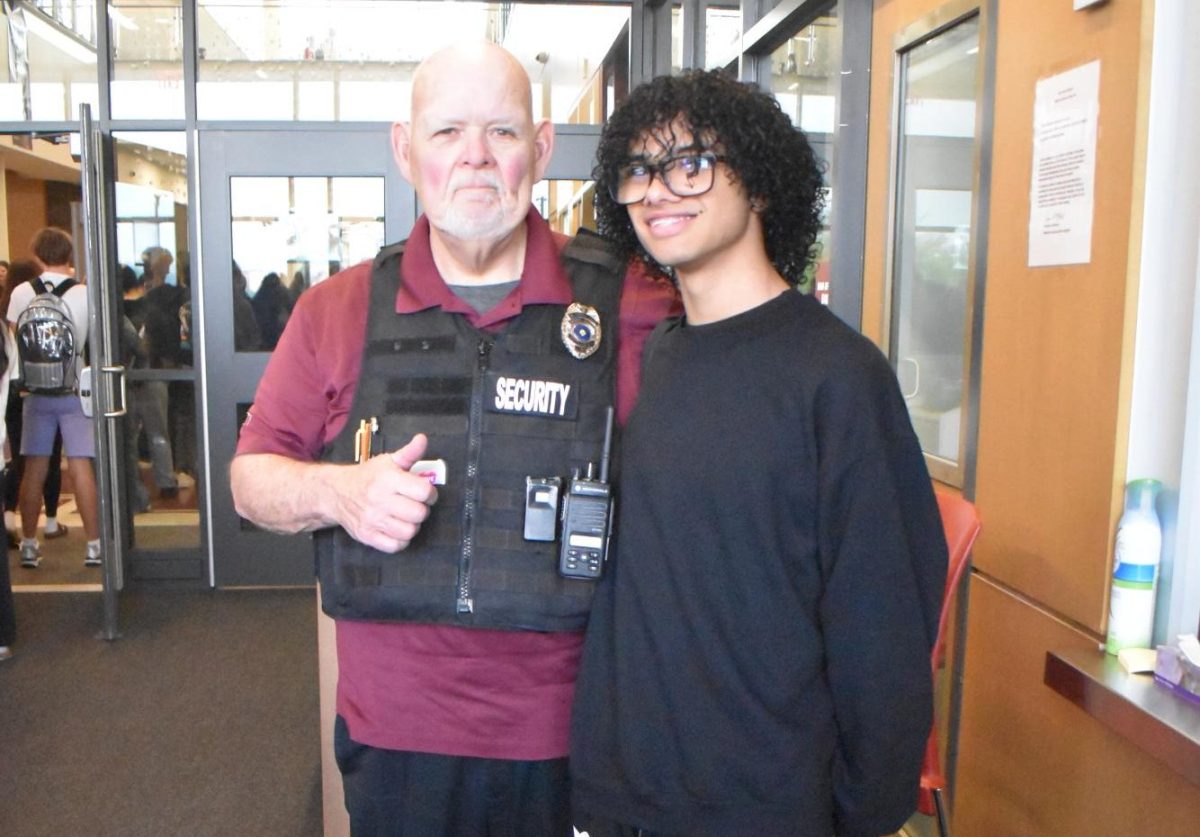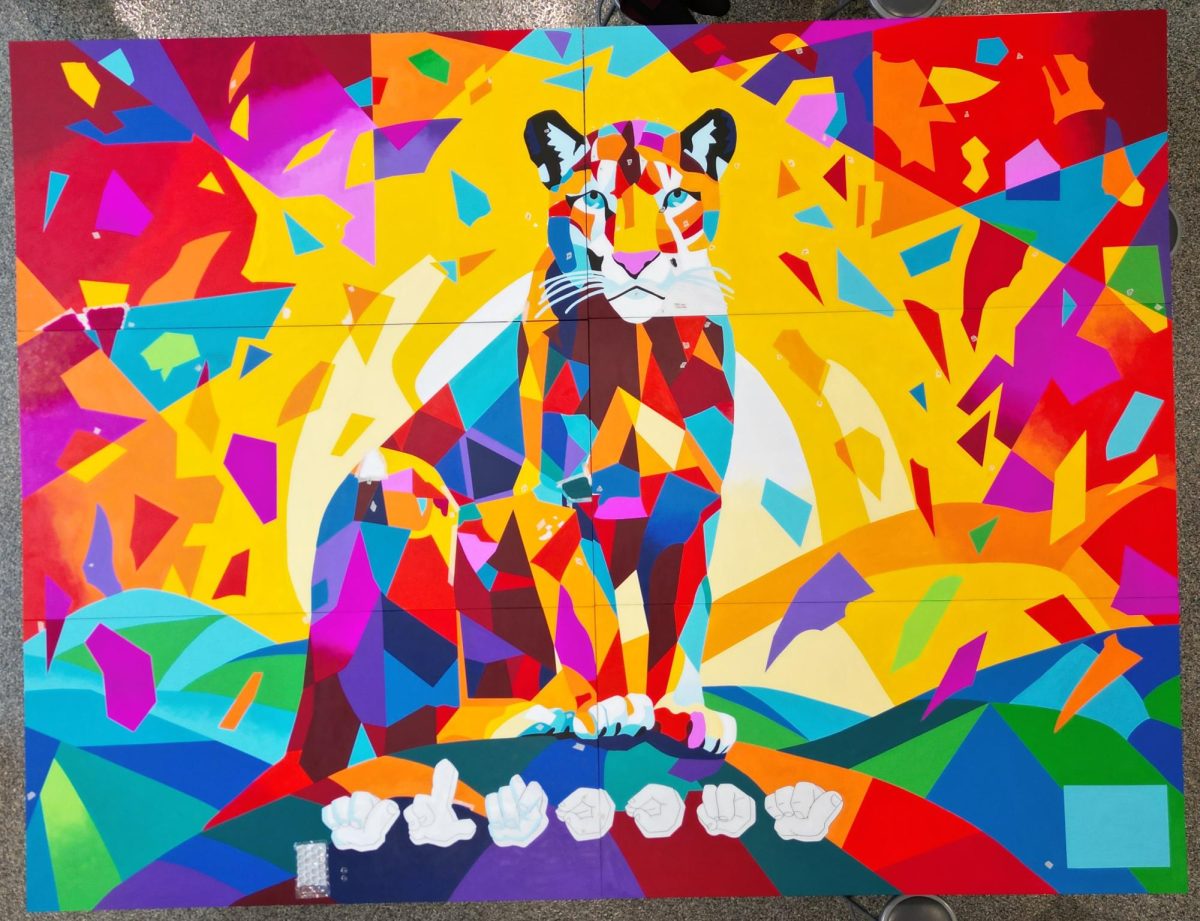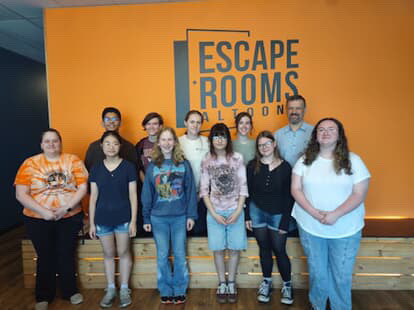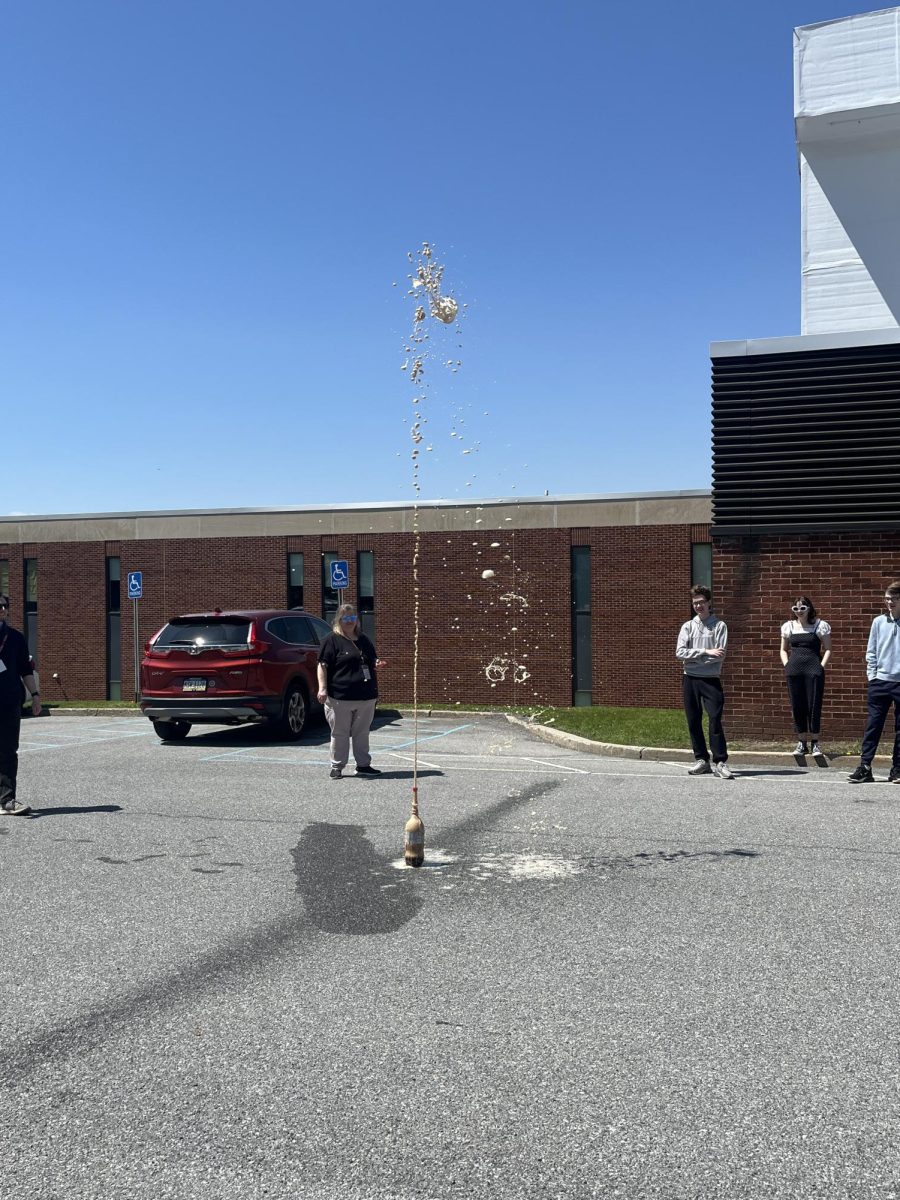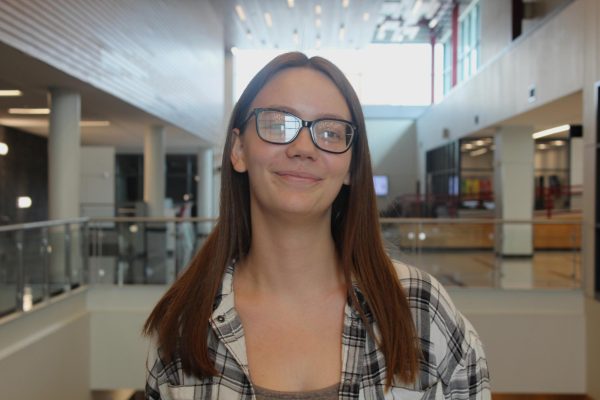It all started with a visit. For John Saboe and his Bernese Mountain dog, McKinley, this visit occurred in Dec. 2023. For Wanda Vanish and her Pomeranian mix, Rusty, it happened the month prior in November.
These visits continued on most “Therapy Dog Thursdays,” when PawZone therapy dog teams would come into the library, and Rusty and McKinley would come into their owners’ rooms every other Thursday. The visiting dogs brought smiles to students’ faces and offered an often much needed break from the everyday stress of high school.
Therapy dogs, unlike service dogs, can be freely interacted with. Therapy dogs provide people with affection, comfort and support, whereas service dogs assist one person to navigate through the world with a disability.
“We did a trial day in December [2023], and it went awesome,” Saboe said. “McKinley just put smiles on faces everywhere she went. Kids were thrilled to death…. Having kids realize McKinley was a therapy dog and she wasn’t a service dog, because we did have a service dog in the building last year, really started to change their view because kids could interact with the dog. Our visit went really, really well, and then unfortunately a number of things got in the way that… put our plan on the back burner.”
This system wasn’t perfect. Whether or not Rusty and McKinley would be allowed in school was ever changing. According to students, having the dogs in school one week, and then suddenly not being there when they were next expected to be, gave them a false sense of hope, excitement and anticipation for seeing the dogs.
“I like that they are there in general,” sophomore Yu’Nazia Reeves said. “I didn’t like that sometimes we had them, and other times we didn’t. It was like a sense of false security, giving you something you like and then it was just taken away.”
“Having [Rusty] in here [last year] was interesting because he didn’t come in very many days for the whole day,” Vanish said. “I think that everyone was so enthusiastic about it… so I could see how it could really work on a daily basis. He enjoyed his time in the library, because he does like the other therapy dogs. The highlight of his day, I think, is interacting with people…. I think the success and the laughter is what made us want to have them here every day this year.”
At the beginning of the 2024-25 school year, students’ concerns regarding whether or not the dogs would be in school were put to rest when it was revealed that Rusty and McKinley would be welcomed into school every day. And, for those students who don’t have a class with Vanish or Saboe, Therapy Dog Thursdays would still be held biweekly during lunch in the library.

“This is my 28th year of teaching,” Vanish said. “If you would have asked me my first year teaching if I thought that I’d be able to bring my dog to school with me, I would have absolutely said, ‘That would never happen in a million years.’ It really makes me optimistic for the school system, and how things can evolve and not just be the same traditional way that things were. I’m just happy and glad that he gets to come here, and I get to share him with some of the other people because he’s a really special little guy.”
Both Rusty and McKinley are registered through the Alliance of Therapy Dogs (ATD). ATD is a nationwide organization that helps members who wish to have their dogs as therapy dogs every step along the way. They provide testing, certification, registration, support and insurance to members who volunteer with their dogs.
One of the leading reasons Rusty and McKinley were welcomed in on a daily basis were the extensive proven benefits of having therapy dogs in schools. According to Karen Morder, some of these benefits include lower blood pressure, higher self esteem, better, more focused interpersonal interaction, better memory and problem solving skills and overall boosted moods. To assure these are being achieved, Rusty, McKinley and their owners put hours of their time and hundreds of dollars into maintaining their dogs’ registration and practicing their skills. Not only do they put in time in school, Rusty and McKinley also work with people of all ages, from toddlers to seniors, within the community regularly.
“Coming to school with me, to work every day, doesn’t count [for volunteer hours] because I’m getting paid to do this. It’s not volunteering,” Vanish said. “So, even though Rusty doesn’t get paid for this, it’s not volunteering for him. We have to make sure that we have a certain number of service hours every three months, and then once a year, we have to update that, and we have to pay for our membership.”
“[Having the dogs here] showed me that school is not all that bad and it gives me a little push to begin my day on a good note,” Reeves said.
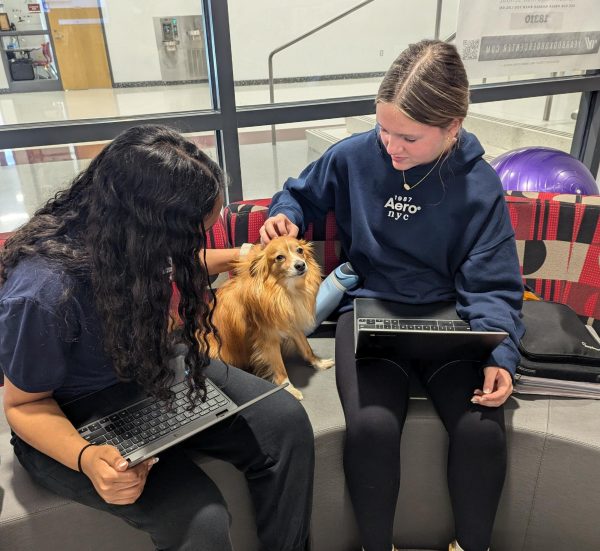
Naturally, having Rusty and McKinley in the building has changed the environment of both their owners’ classrooms and the whole school. This change has posed some challenges, but has been an overall welcome change for the teachers and students alike.
“I think she brings in a little bit of a change in a very positive direction,” Saboe said. “I think she relieves some of the stress of what is the classroom, I think the kids enjoy the opportunity to be able to pet her. She has movement around the classroom, so she’ll go where she wants. At times, she can be demanding with pets. Most of the time, it’s the opportunity that she is laying, and she will cry or whine because people aren’t petting her.”
“The class seems more upbeat with Rusty in our class,” freshman Izzie Benjamin said. “Even if it is just him passing under our chairs, to me, he provides a sense of relief. He impacts moods and is a great addition to our class.”
Overall, the struggles posed are minimal, and welcomed when looking at the big picture. Rusty and McKinley alike bring smiles to faces, brightening the days of those who interact with them even if just for a few moments.
“I think a lot of times teachers or students are having a bad day, and I knew that whenever I got home, Rusty was just jumping up and down and happy to see me,” Vanish said. “I think that the hope was that I see a lot of students who aren’t excited about coming to school, and the attendance rates, I think, are just disturbing. I was hoping that maybe this could be something that we could start with; that students might come to school because they were hopeful to see McKinley, hopeful to see Rusty, and just to change the environment of my classroom and wider at the school.”




